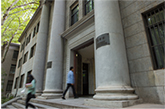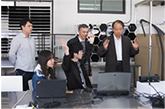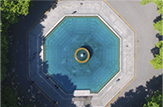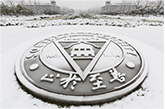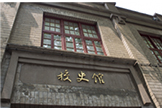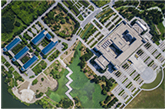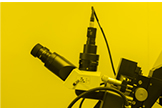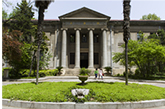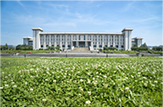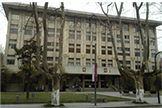[Southeast University News Network, March 9] (Correspondent: Scientific Research Institute) Recently, Teacher Liu Hao from National ASIC System Engineering Research Center (referred to as the National ASIC Center) received information from the application units that the “low-power IoT positioning technology” developed by the center has been functioning well since its application to the two largest temporary sheltered hospitals for half a month. It has been fully affirmed by the users... All staff of Southeast University have been engaged in the epidemic prevention since its outbreak. In the course, the school not only dispatched a batch of medical experts such as Qiu Haibo, etc. to the frontline of epidemic prevention and control, but also gave a full play to the advantages of combining production, learning, research and medicine, making SEU’s contributions to the scientific war against the epidemic in the fields of medical infrastructure construction, testing reagents, basic medical research, medical auxiliary equipment, epidemic prevention supplies and protection of people’s livelihood , etc..
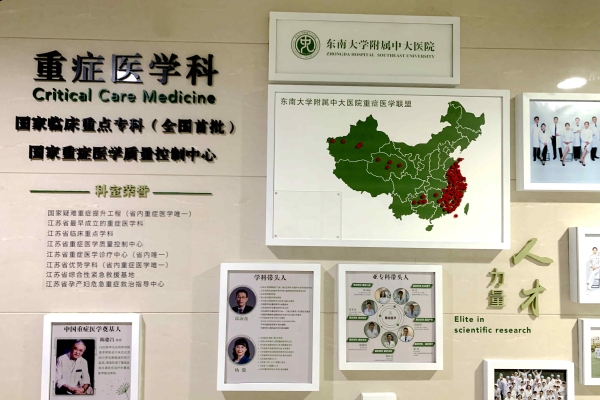
The critical care medicine team led by Qiu Haibo raced against the clock to assist Wuhan and made great contributions.
The Laboratory of Critical Medicine Organ Injury and Functional Reconstruction affiliated to Southeast University has been devoted to the basic scientific research and clinical work of multiple organ dysfunction, especially acute respiratory distress syndrome for many years, and has formed a relatively complete research system. In recent years, the laboratory has undertaken more than 70 provincial and ministerial-level projects such as major national science and technology projects and national natural fund projects, and been awarded the second prize for national scientific and technological progress, and the second prize for Chinese medical science and Technology, etc.. In the treatment of COVID-19 this time, the academic leader of the laboratory, Professor Qiu Haibo, raced against the clock to assist Wuhan on January 19 as a member of the national expert team to guide the treatment of critically ill patients at the frontline. Meanwhile, the scientific research team, on the basis of scientific achievements for many years, studied COVID-19 and guided the clinic to provide new ideas for treatment and make a significant contribution to reducing the mortality of critical patients.
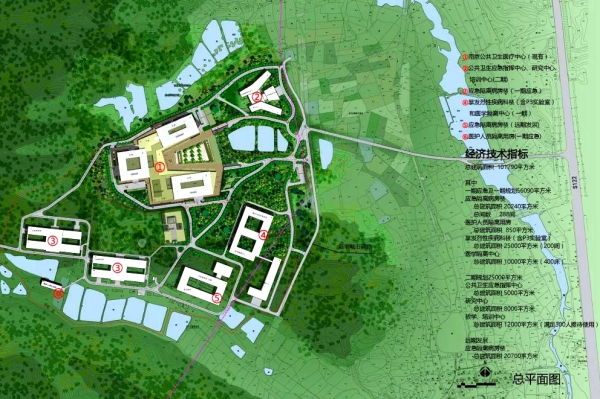
SEU version “Xiaotangshan 2.0” was put into use in Nanjing
At the end of January, facing the serious situation of the rapid spread of COVID-19, Nanjing Public Health Medical Center needed to expand its existing capacity urgently. In the afternoon of January 29, upon receipt ofthe urgent notice from Nanjing Housing and Urban-Rural Construction Commission, Southeast University and the Architectural Design and Research Institute of Southeast University were entrusted the mission at this critical moment to design the emergency project. The design team worked day and night, conquered various technical challenges such as vertical processing of the site, rainwater and sewage collection, disinfection and processing at the site, and finally accomplished the entire set of working drawings in only three days.Various professionals from SEU Design Institute constituted the on-site service team and the supporting design team, which collaborated closely with the construction team to promote the project progress in a rapid manner. On February 14, the installation of the first 72 prefabricated wards of Nanjing “Xiaotangshan 2.0” Hospital was completed. The emergency engineering design of Nanjing Public Health Medical Center, while referring to the construction experience of Beijing Xiaotangshan Hospital, highlighted its own distinctive “Nanjing model”-a combination of peace and war, emergency and permanent backup. In addition, the architects of Southeast University thought actively and provided suggestions on the design of the emergency reconstruction of the gymnasium to a temporary medical center, the emergency measures for urban traffic, and the impact and control of the spread of COVID-19 in the building, etc..
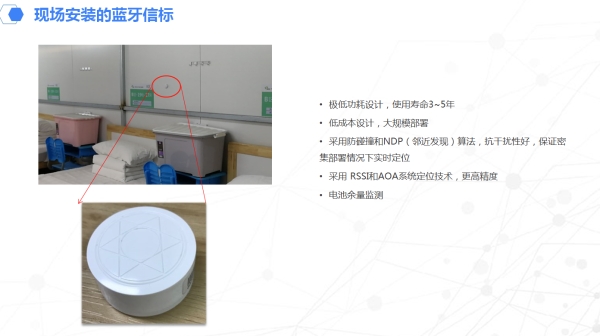
“Low-power IoT Positioning Technology” Provided Key Technology for Intelligent management of Wuhan Temporary Sheltered Hospitals
The “low-power IoT positioning technology” product jointly developed by the team led by Liu Hao and Huang Cheng from the National ASIC Center of Southeast University and their cooperative enterprises were deployed in Wuhan temporary sheltered hospitals. The system can monitor the real-time position and the motion trail of patients in the hospital within their active area, and provide information services such as cross-border alarms; it can summarize the quantity and regional distribution of various types of personnel in the temporary sheltered hospitals. When the patients in the hospital encounter any unexpected circumstance, they can call by touching the positioning tag they wore. In addition, the product can track and manage the medical equipment as installed with positioning tags in the hospital, manage the visiting area and time of the inspection staff in the hospital. Since the operation of such application system for over two weeks, it has provided a visualized platform for the management of patients, medical staff and medical equipment in the temporary sheltered hospitals, offering a key technical approach for intelligent management and greatly improving the management efficiency of these hospitals. Upon receipt of the demand, teacher Liu Hao’s and Huang Cheng’s team responded urgently, determined the technical solution and modified the code for their cooperative enterprises in a short time, and developed an automated test program overnight to support the companies to complete the first batch of products and delivery on the first day of work resumption. Such efforts have been widely acclaimed by their cooperative enterprises such as Suzhou Beelinker and Shanghai Wizarcan, etc.. It is the team of National ASIC Center affiliated to the School of Electronic Science and Engineering at Suzhou Key Laboratory of Integrated Circuits, located at Suzhou Campus of Southeast University, that was engaged in this joint research and development.
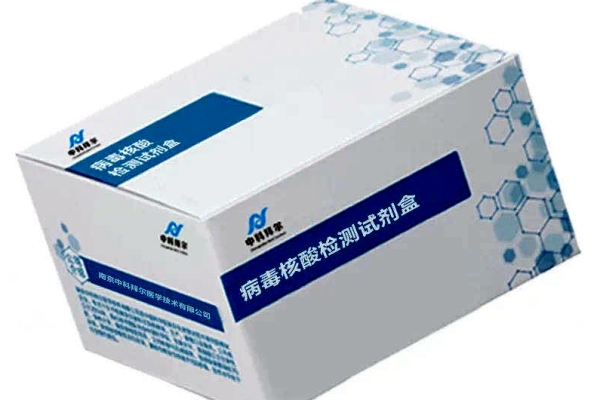
It takes only 18 minutes. The scientific research achievement of Professor He Nongyue’s team provides the sample pretreatment tool for NOVID-19 molecular diagnosis.
Recently, the “nucleic acid extraction kit” developed based on Prof. He Nongyue’s patent transfer result “All-Temperature Microvolume Mixing Incubation System” at the National Key Laboratory of Bioelectronics of Southeast University, has become a powerful tool for detecting COVID-19. Upon mass production, this product has been applied to multiple molecular diagnostic laboratories in many top Grade A hospitals and disease control centers, etc.. It takes only 18 mins to complete the purification and enrichment of novel coronavirus RNA by using this product together with the novel coronavirus RNA purification kit as developed by Nanjing Zhongda Bio-information Research Institute and Nanjing Zhongkebio Medical Technology Co., Ltd., highlighting even higher yields when compared with commercially available extraction systems that generally take about 30-45 minutes. This has provided a powerful sample preparation tool for the molecular diagnosis of COVID-19.
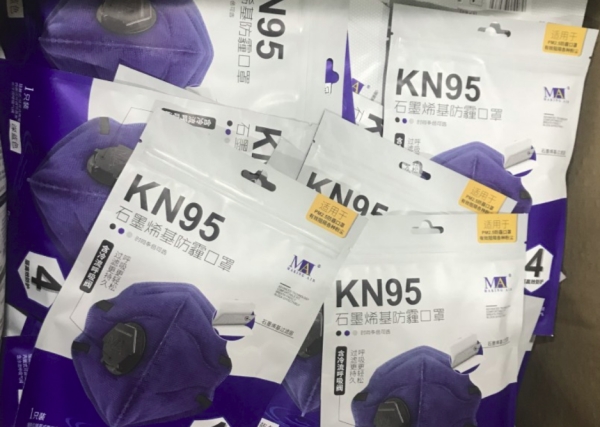
Graphene-based masks arrived at Wuhan for assistance.
Professor Sun Litao from the School of Electronic Science and Engineering of Southeast University has long been engaged in the research of basic frontiers and related applications of graphene and other new nanomaterials. Before the spring festival whenever he heard that masks were in urgent demand in Wuhan, he soon contacted his cooperative enterprise Changzhou Carbon Star Technology Co., Ltd. and distributed nearly 400,000 graphene-based KN95 masks developed by Prof. Sun Litao’s team to Wuhan at the rapidest speed. In 2010, the team discovered the ultra-high adsorption of graphene for the first time at the laboratory. In 2012, the team cooperated with an enterprise to industrialize the graphene-based masks, whose protection level reached the highest level as stipulated by the new standards issued in 2016: Class A. As the virus in this pneumonia epidemic is mainly transmitted through droplets or aerogel in the air, the graphene-based masks can directly adsorb tiny particles by virtue of the large specific surface area of graphene, which can thus solve the difficulty of failure due to water vapor. Therefore, such masks can maintain a high adsorption rate for a long time, which can effectively prevent and control viruses.
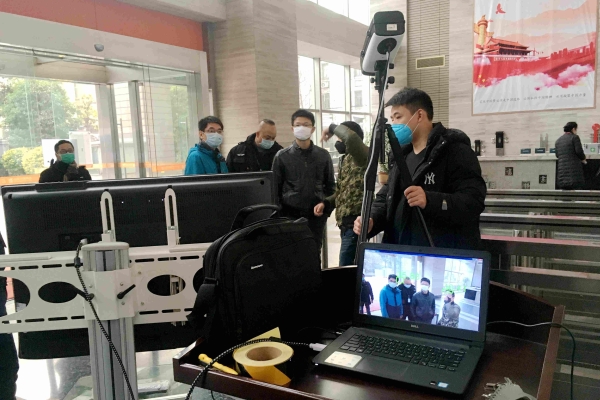
“Non-contact intelligent precision temperature measurement and screening system” is serving the frontline of epidemic resistance
The “non-contact intelligent precision temperature measurement and screening system” developed by Yang Wankou’s team from the School of Automation of Southeast University has been successfully deployed in the United Front Work Department of Jiangsu Provincial Party Committee, the Office Hall of Jiangsu Provincial Public Security Department, Phoenix Group, Xuzhuang Software Park, Tangquan Sub-district, Yonghui Supermarket etc. to serve the frontline of “epidemic prevention” directly. With the support of National Natural Science Foundation’s project of “Research on Hybrid Feature Learning Methods for Static Image Behavior Recognition”, the system can automatically recognize human faces accurately from the infrared images, perform temperature measurement, and provide automatic sound-light alarm incase of abnormal temperature with high accuracy, good instantaneity and wide coverage.
(Editor-in-charge: Sun Yan, reviewed by: Li Xiaonan)


